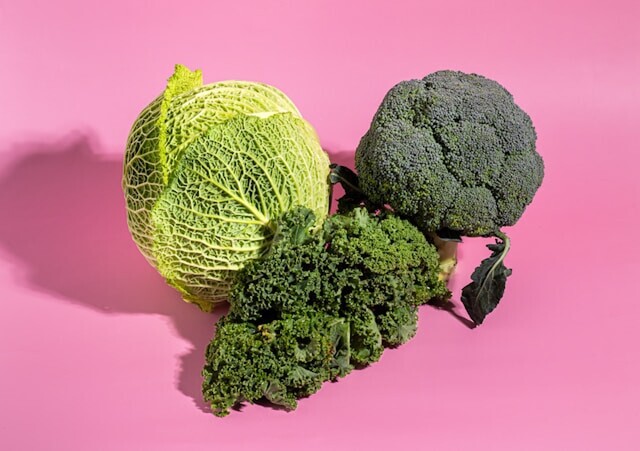A comprehensive resource for navigating menopause with confidence and vitality
Understanding Your Changing Body
What's Really Happening During Menopause
During perimenopause and menopause, your estrogen and progesterone levels fluctuate wildly before eventually declining. This hormonal shift affects:
Metabolism - How your body processes food and burns calories
Muscle mass - You lose muscle more rapidly without adequate support
Sleep patterns - 40-60% of menopausal women experience sleep disturbances
Mood regulation - Hormonal changes directly impact neurotransmitter balance
Bone density - Estrogen decline accelerates bone loss
Body composition - Fat distribution shifts, particularly to the midsection
Early Warning Signs
Sleep disturbances often appear before periods start changing - this is your body's early signal that hormonal shifts are beginning.
The Protein Revolution
Protein is the building blocks of our tissue and structures within the body, and is important for:
Performance and essential for overall health
Hormones and neurotransmitters are made from protein like the hormones epinephrine and norepinephrine seratonin, melatonin and dopamine
Muscle Mass Preservation - Combats rapid muscle loss during menopause
Blood Sugar Stability - Reduces erratic energy swings and cravings
Satiety - Helps you feel satisfied longer
Metabolism Support - Protein has the highest thermic effect of all the macronutrients.
How Much Protein Do You Need?
General Guideline: Most menopausal women need 1.2-1.6 grams per kilogram of body weight. (excluding your body composition goals and exercise). So, this number can be higher desponding on your unique self.
The best guide to knowing how much protein to eat when starting out, is to include a good quality protein source in every meal. Use your hand size as a rough guide much you should be eating.
When building your plate of food, I like to build my meals are around protein.
Quality Protein Sources
Animal-Based:
Lean meats (chicken, turkey, lean beef)
Fish and seafood
Eggs
Greek yogurt
Cottage cheese
Plant-Based:
Legumes and beans
Quinoa
Hemp seeds
Protein powders (pea, hemp, rice blend)
Nuts and nut butters
Smart Exercise for Menopause
Strength Training (Non-Negotiable)
Why: Heavy resistance training maintains bone density, builds muscle mass, and improves insulin sensitivity. Note: Lifting heavy does not mean body building... it is relative to you! So you may only be able to squat your body weight to start with. Listen to your body and increase your weights over time.
How Often: 2-3 times per week minimum
Focus: Progressive overload (increase your weights every time) with compound movements (full body exercises like a deadlift, squat as these mimic everyday life movements, picking up things off the floor and getting in and out of the chair).
Walking
I know it may sound like the obvious, but walking is so important for our health. With many of us living sedentary lives, it is easy to sit at a deck and forget to get our daily movement in. It is good for our metabolism, good for our lymphatic system, our digestive health, sleep, weight management, bone health and it boosts our energy and mood!
We should be aiming to walk every day and get in some hill walks to help build strength and increase our heart rate.
Moderate intensity cardio:
Why: Whether it’s walking, cycling, dancing, or running, getting your heart rate up offers a wide range of physical and mental benefits—many of which directly address the challenges of perimenopause.
There’s no one-size-fits-all—what matters is that it feels good and fits your lifestyle. Cardio doesn’t have to mean pounding the pavement or pushing yourself to exhaustion. It’s about finding what feels good, energizes you, and supports your health—not just for this stage of life, but for the years ahead.
Recovery is Key
Your recovery needs change dramatically:
Prioritize sleep (7-9 hours nightly)
Include rest days between intense sessions
Listen to your body's signals
Consider stress levels when planning workouts
Natural Hormone Support Toolkit
Essential Supplements
Magnesium
Why: Supports sleep, reduces anxiety, aids muscle function
Best Forms: I like Magnesium Glycinate the best
Timing: Evening for sleep support
Vitamin D3
Why: Supports bone health, immune function, mood
Amount: Test levels first, typically 2000-4000 IU daily
With: Take with vitamin K2 and healthy fats
Omega-3 Fatty Acids
Why: Reduces inflammation, supports brain health
Source: High-quality fish oil or algae-based
Amount: 1000-2000mg EPA/DHA daily
Targeted Herbal Support
Adaptogenic Herbs
Ashwagandha for stress and cortisol balance
Rhodiola for energy and mental clarity
Holy basil for stress and blood sugar support
Liver Detoxification Support
Your liver works hard processing fluctuating hormones:
Cruciferous vegetables (broccoli, kale, Brussels sprouts)
Milk thistle supplement
Adequate hydration (half your body weight in ounces)
Reduce alcohol consumption
Sleep Optimization Strategy
Sleep Hygiene Essentials
Environment:
Keep bedroom temperature comfortable, not too hot and not too cold
Use blackout curtains or eye mask
Remove electronic devices. No screen time a couple of hours before bed
Consider white noise machine
Evening Routine:
No caffeine after 2 PM
Light dinner 3 hours before bed
Relaxing activities (reading, gentle stretching)
Consistent bedtime
Natural Sleep Supports:
Magnesium glycinate (200-400mg)
Chamomile tea
L-theanine for racing thoughts
Stress Management for Hormonal Balance
Why Stress Matters More Now
Chronic stress exacerbates every menopausal symptom by:
Disrupting the HPA (hypothalamic-pituitary-adrenal) axis
Interfering with sleep quality
Worsening hot flashes and night sweats
Contributing to weight gain, especially belly fat
Evidence-Based Stress Reduction
Daily Practices:
10-20 minutes meditation or deep breathing
Regular nature exposure
Gentle yoga or tai chi
Journaling or gratitude practice
Weekly Practices:
Massage or bodywork
Social connection with supportive friends
Creative activities you enjoy
Nutrition for Hormonal Balance
Anti-Inflammatory Foods (Emphasize)
Omega-3 Rich:
Fatty fish (salmon, sardines, mackerel)
Walnuts and flaxseeds
Chia seeds
Antioxidant Powerhouses:
Berries (blueberries, blackberries)
Dark leafy greens
Colorful vegetables
Fiber for Hormone Detox:
Vegetables (aim for 7-9 servings daily)
Fruits (2-3 servings)
Legumes and beans
Whole grains in moderation
Foods to Limit
Pro-Inflammatory:
Ultra-processed foods
Excess sugar and refined carbs
Trans fats
Excessive alcohol (more than 1 drink daily)
Hormone Disruptors:
Conventionally raised meat and dairy (when possible, choose organic)
Plastics in contact with food
Non-organic produce (especially "Dirty Dozen" items)
Your 30-Day Quick Start Plan
Week 1: Foundation
Increase protein at breakfast to 25-30g
Add 1 strength training session
Take magnesium before bed
Establish consistent bedtime
Take a greens multi vitamin powder like Good Green Vitality from Nuzest. Use my code Amynourish to receive 15% off. Just go to www.nuzest.co.nz
Week 2: Building
Add protein to all meals and snacks
Include 2 strength training sessions
Start omega-3 supplement
Practice 10 minutes daily stress reduction
Week 3: Expanding
Fuel after your workout with protein, healthy fats and carbs.
Include 3 strength training sessions
Increase vegetable intake to 7+ servings
Week 4: Optimizing
Fine-tune protein timing throughout day
Add HIIT or interval training
Consider herbal support (with guidance)
Evaluate and adjust based on how you feel
When to Seek Professional Support
Red Flags That Need Attention
Severe hot flashes disrupting daily life
Depression or anxiety that interferes with functioning
Significant sleep disruption despite good sleep hygiene
Unexplained weight gain despite healthy habits
Bone density concerns
Cardiovascular risk factors
What to Look for in a Practitioner
✅ Experience with menopause and women's health
✅ Understanding of both conventional and natural approaches
✅ Willingness to order comprehensive testing
✅ Personalized treatment plans
✅ Ongoing support and monitoring
Your Personal Action Plan
Assess Your Current Status
Rate each area from 1-10:
Energy levels: ___
Sleep quality: ___
Mood stability: ___
Exercise consistency: ___
Nutrition quality: ___
Stress management: ___
Top 3 Priority Areas
Based on your assessment, identify your top 3 areas for improvement:
30-Day Goals
Goal 1: ___________________________ Action Steps: ______________________
Goal 2: ___________________________ Action Steps: ______________________
Goal 3: ___________________________ Action Steps: ______________________
Remember: You're Not Alone
Menopause is a natural transition, not a disease to be cured. With the right knowledge, support, and personalized approach, you can emerge from this phase stronger, healthier, and more vibrant than before.
The journey to thriving through menopause starts with understanding your unique needs and having expert guidance to help you implement the right strategies at the right time.
Resources for Continued Learning:
Keep a symptom diary to track patterns
Join supportive online communities
Stay current with reputable women's health resources
Consider working with a qualified practitioner for personalized guidance.
This guide provides general information and should not replace professional medical advice. Always consult with healthcare providers before making significant changes to your health routine.




